Blogs

Top 7 Applications of Ti 6 2 4 2 Alloy You Should Know
Introduction
In the realm of advanced materials, Titanium 6-2-4-2 alloy, or Ti-6242, has emerged as a frontrunner due to its exceptional properties and versatile applications across various industries. Comprising a unique blend of titanium, aluminum, tin, and zirconium, this alloy is engineered for superior strength and corrosion resistance, making it indispensable in critical sectors such as:
- Aerospace
- Automotive
- Medical devices
As procurement managers seek materials that not only meet stringent performance standards but also align with evolving industry demands, understanding the composition, manufacturing processes, and comparative advantages of Ti-6242 becomes essential. This article delves into the intricacies of Ti-6-2-4-2, exploring its key applications, sourcing challenges, and future trends, providing valuable insights for informed decision-making in material procurement.
Overview of Ti 6 2 4 2 Alloy: Composition and Properties
The titanium alloy known as Ti 6 2 4 2, or Ti-6242, is an advanced titanium alloy with a composition of approximately:
- 90% titanium
- 6% aluminum
- 2% tin
- 4% zirconium
This specific formulation is pivotal, as it results in an exceptional strength-to-weight ratio and remarkable corrosion resistance, making it an ideal choice for critical applications. Significantly, Titanium Grade 2, which Ti is frequently compared to, has an elongation of 20%, providing a quantitative measure of its mechanical properties.
The material Ti 6 2 4 2 stands out for its outstanding mechanical properties, particularly at elevated temperatures, which is essential in contexts where thermal stability is paramount, such as aerospace and automotive industries. Furthermore, the alloy’s refined microstructure significantly enhances its fatigue resistance, an attribute that is crucial when operating under demanding conditions. As Ms. Florence Tang, General Manager, emphasizes, ‘We prioritize quality control at every stage of the production process, ensuring that our dioxide not only meets but exceeds your expectations.’
Such properties position Ti as a reliable option for procurement managers seeking high-performance materials. Moreover, a case study comparing Grade 2 Titanium and Grade 9 Titanium shows that while Grade 9 titanium provides enhanced corrosion resistance and strength, Grade 2 is appropriate for uses needing good strength and simpler welding, further demonstrating the practical uses of Ti.
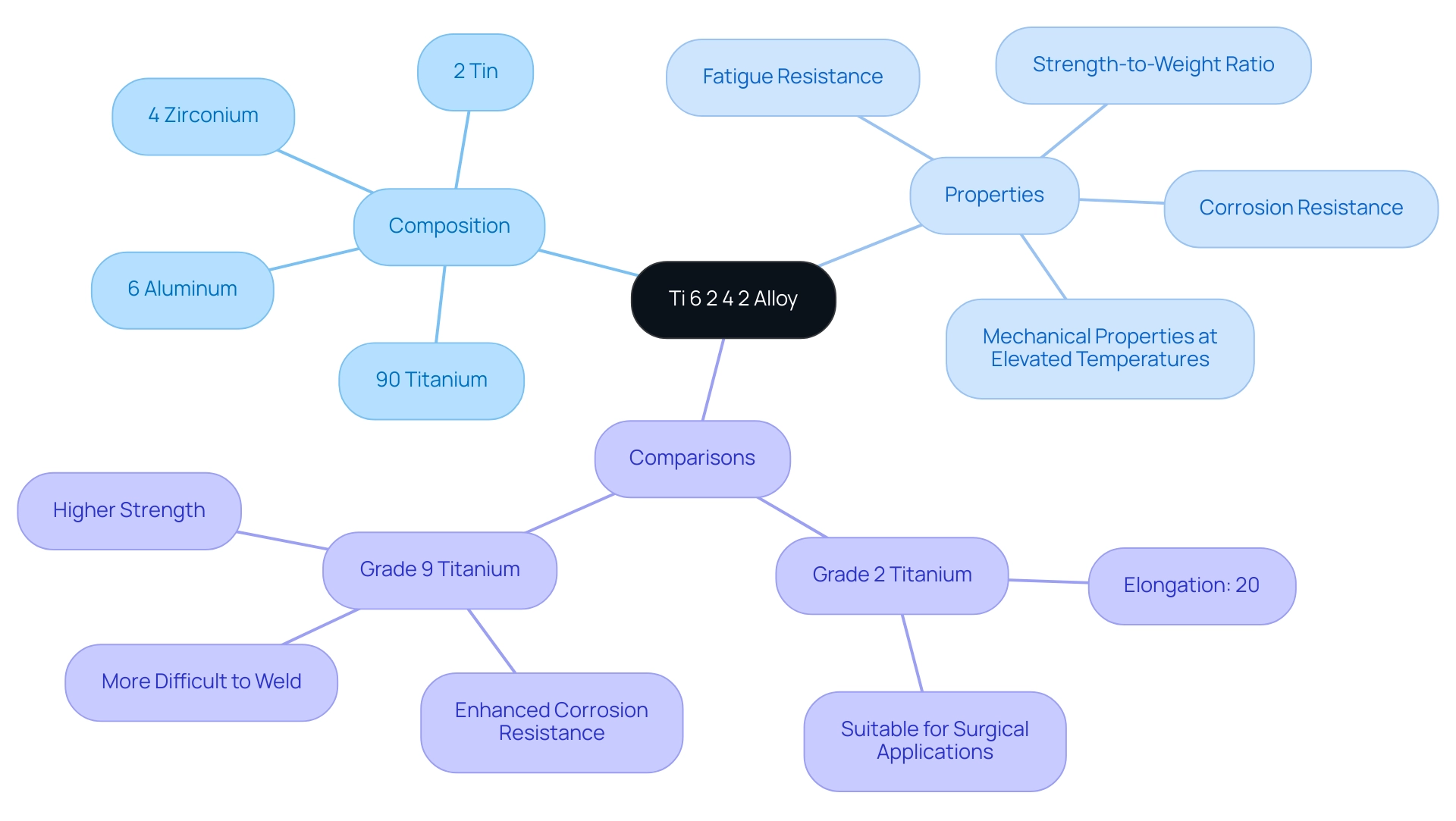
Key Applications of Ti 6 2 4 2 Alloy in Industry
The Ti alloy 6-4-2 is increasingly acknowledged for its wide-ranging uses in various essential sectors, demonstrating its notable adaptability and engineering importance:
Aerospace: Known for its lightweight yet high-strength characteristics, Ti 6-4-2 is utilized in aircraft components, including engine parts, airframes, and landing gear. Its capability to endure high temperatures enhances its effectiveness in these critical applications, making it a preferred choice among aerospace engineers. Notably, titanium mixture 6-4, developed by Stan Abkowitz in 1951, has a thermal conductivity of 6.7 W/mK, which is advantageous in aerospace applications.
Automotive: In the automotive sector, particularly within high-performance vehicles, Ti is employed for vital components such as valve springs, connecting rods, and exhaust systems. The alloy’s reduced weight and increased strength contribute significantly to improved performance and fuel efficiency, aligning with the latest industry trends toward lightweight materials.
Medical Devices: The biocompatibility and corrosion resistance of Ti render it an excellent material for surgical implants and instruments. These properties ensure long-term safety and reliability in medical applications, where material integrity is of utmost importance.
Marine Engineering: Ti 6-4-2’s resistance to seawater corrosion makes it indispensable in marine components, including propellers and shafts. Its capability to withstand harsh marine environments underscores its utility in this sector.
Oil and Gas: The composite finds application in downhole tubing and other essential equipment for oil and gas extraction. Its exceptional strength and corrosion resistance are critical in environments where durability is non-negotiable. The mechanical characteristics of titanium mixture 6-4, which feature a tensile strength of 950 MPa and a yield strength of 880 MPa, illustrate its appropriateness for challenging uses in this sector.
Chemical Processing: The durability of Ti alloy, combined with its resistance to chemical attack, positions it as a reliable choice for components within chemical processing plants, ensuring operational efficacy and safety.
Sports Equipment: Finally, titanium is also utilized in premium sports gear, such as bicycle frames and golf clubs, where performance metrics and weight reductions are vital for improving athlete performance.
These various uses demonstrate not only the material’s versatility but also its important contribution to advancing contemporary engineering and manufacturing practices.
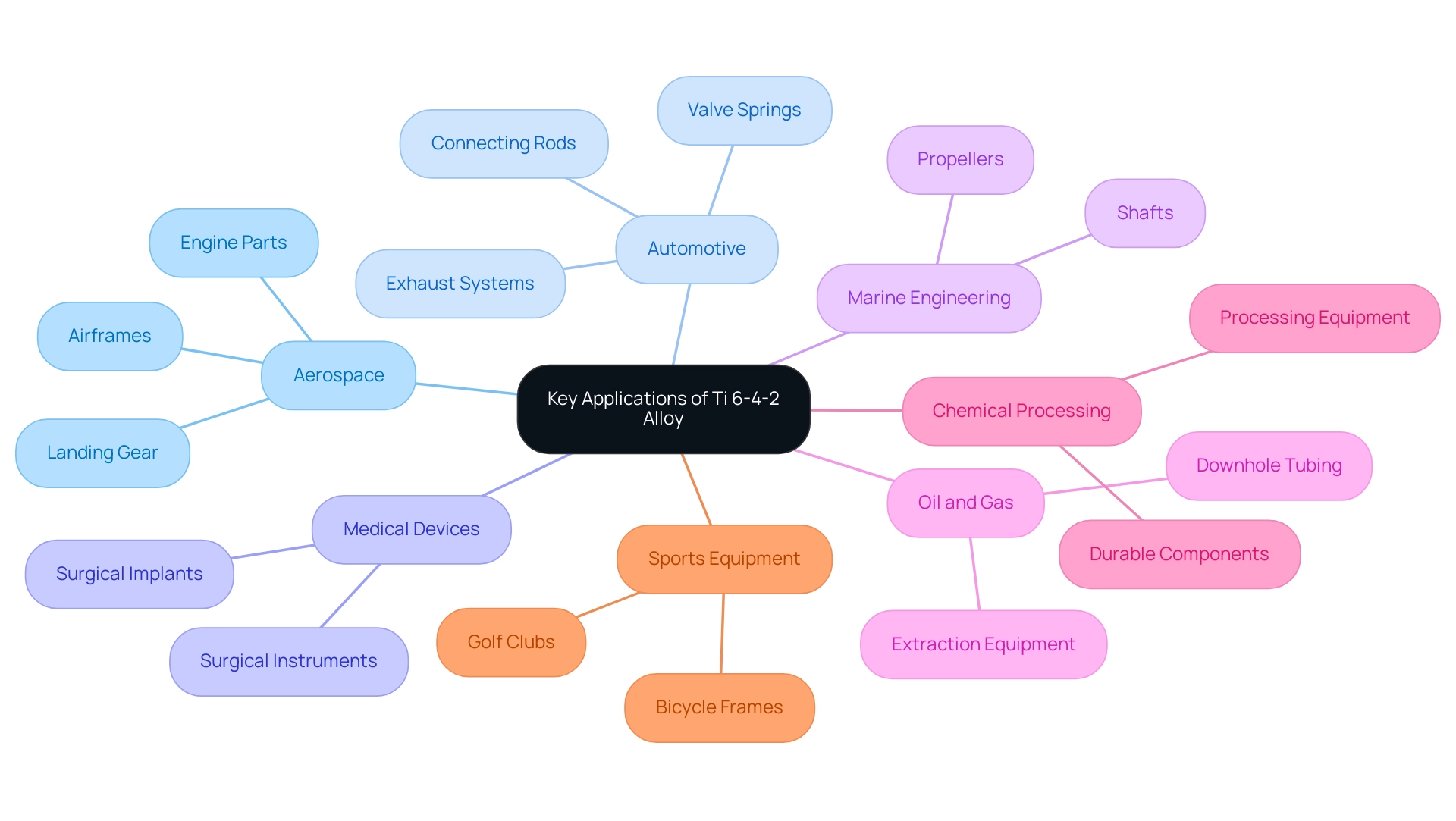
Comparative Advantages of Ti 6 2 4 2 Alloy Over Other Titanium Alloys
The alloy presents considerable benefits compared to other variants, such as Ti 6-2-4-2 and Ti 5-2-3, establishing it as a leading option for challenging uses. As David noted in a conversation about metal products, some users value functionality over emotion, which is especially pertinent in situations where material performance is essential. The key advantages of Ti include:
- Enhanced Strength: Ti possesses a greater strength-to-weight ratio, approximately 30% stronger than the traditional Ti 6-4, making it especially ideal for scenarios where a lightweight yet durable material is crucial.
- Superior Corrosion Resistance: This alloy demonstrates excellent resistance to a variety of corrosive environments, outpacing many other titanium alloys, especially in marine and chemical applications, where durability is paramount.
- Improved Weldability: Known for its exceptional weldability, Ti alloy facilitates easier fabrication and assembly, which is crucial for complex structures in aerospace and industrial settings.
With enhanced performance at elevated temperatures, Ti 6-2-4-2 is the ideal material for sectors such as aerospace and automotive, where thermal resistance is critical. Moreover, the choice between Ti 6-4 and Ti 6-4 ELI should be considered based on specific application requirements, such as aerospace or medical use, highlighting the importance of selecting the right alloy for the task at hand. Additionally, concerns about the durability of titanium rings, as shared in a case study, illustrate real-world issues that can arise with titanium products, emphasizing the need for careful consideration of practicality and performance. These comparative advantages position Ti as a strategic material choice for engineers and procurement managers seeking reliable and high-performance solutions.
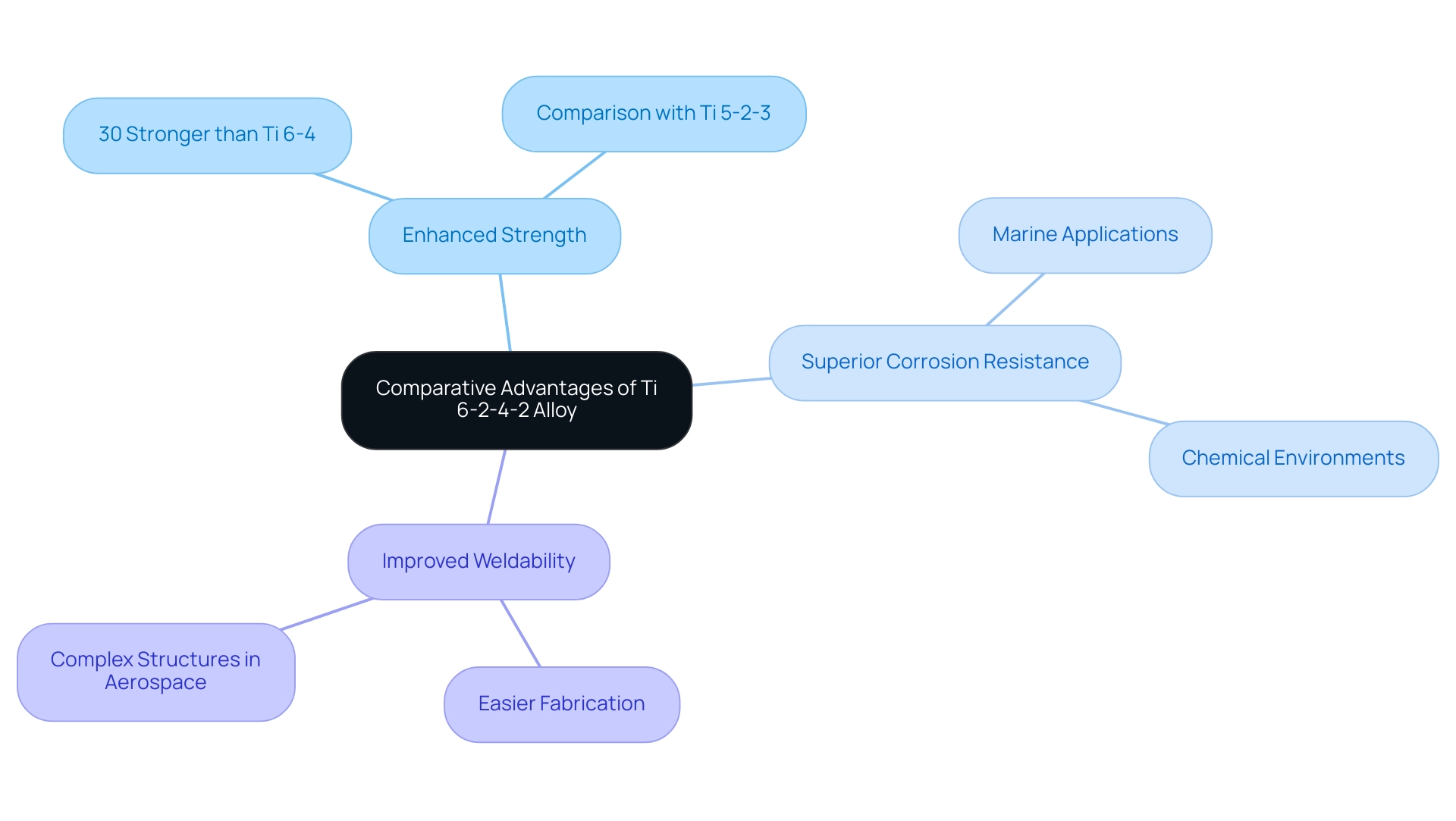
Manufacturing Processes for Ti 6 2 4 2 Alloy Components
The manufacturing of Ti 6-2-4-2 alloy components involves several essential processes that are critical for ensuring performance and reliability:
Casting: This method entails pouring molten metal, known as ti 6 2 4 2, into molds to achieve intricate designs. Investment casting is particularly favored for producing high-precision components, allowing for complex geometries that meet stringent specifications.
Forging: Utilizing either hot or cold forging techniques, this process shapes the alloy while significantly enhancing its mechanical properties. Forging creates a uniform grain structure, eliminating defects such as voids and enhancing strength through directional grain flow, which is vital for applications requiring exceptional toughness. Notably, forging produces a far stronger metal due to its ability to eliminate holes and create a uniform granular layout. As illustrated in the case study titled “Grain Flow,” the grain flow produced during forging enhances strength and mechanical properties, contrasting with casting, which does not create grain flow, leading to potential metallurgical defects.
Machining: CNC machining is widely adopted to attain precise tolerances and superior surface finishes on components. Due to the toughness of ti 6 2 4 2, specialized tools and machining techniques are often necessary to meet the demanding manufacturing standards.
Heat Treatment: Implementing appropriate heat treatment processes is crucial for optimizing the strength and ductility of the alloy. This step guarantees that the completed components function reliably in their intended uses, meeting performance expectations.
Surface Treatment: Techniques such as anodizing or coating are employed to enhance the corrosion resistance and wear properties of the components, significantly extending their operational lifespan.
Understanding these manufacturing processes is indispensable for procurement managers in the context of ti 6 2 4 2. It allows them to choose suppliers who are dedicated to best practices, guaranteeing that Ti components meet the essential performance standards while adhering to project budgets and needs. Furthermore, consulting a metal manufacturer is recommended to determine the most suitable process for specific applications and budgets.
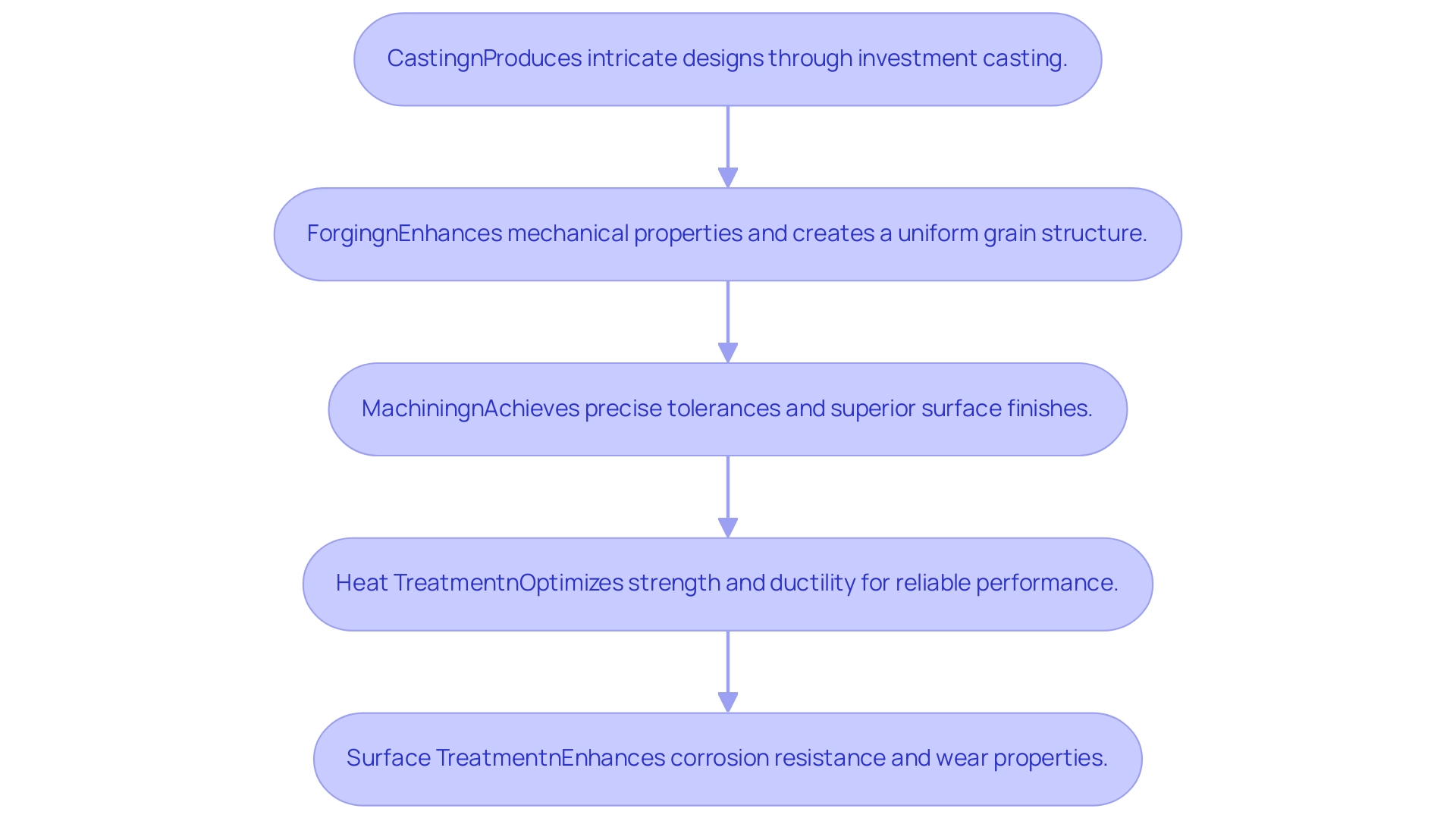
Challenges in Sourcing Ti 6 2 4 2 Alloy
Sourcing ti 6 2 4 2 material involves navigating a complex landscape of challenges that can significantly affect procurement strategies. Key challenges include:
Supply Chain Disruptions: Recent global events, particularly the COVID-19 pandemic, have underscored the fragility of supply chains. The pandemic caused unmatched worldwide disturbances, with considerable increases in demand for essential items and electronics, which obstructed the supply of raw materials required for metal mixtures. This situation not only extended lead times but also inflated costs. As Elon Musk, CEO of Tesla, stated, “Our biggest challenge is supply chain, especially microcontroller chips. Never seen anything like it. Fear of running out is causing every company to over order – like the toilet paper shortage, but at epic scale.”
Quality Control: Consistency in quality is essential when sourcing metals, as any variation in composition can severely impact performance. Establishing stringent quality assurance protocols from suppliers is necessary to mitigate risks associated with inconsistencies.
Regulatory Compliance: The procurement process can be complicated by the need to navigate a plethora of international standards and regulatory requirements. It is essential for procurement managers to be well-versed in compliance issues to avoid delays and potential penalties.
Cost Fluctuations: The titanium market is known for its volatility. Procurement managers must be equipped to handle unpredictable price changes, which necessitates careful budgeting and forecasting to ensure financial stability and project viability.
Supplier Relationships: Establishing strong, dependable connections with suppliers is essential for ensuring consistent quality and availability of the ti 6 2 4 2 material. Trust and communication can mitigate many risks associated with sourcing challenges.
The implications of these challenges can be illustrated by the recent chip shortage (2020-2022), where increased demand for electronics during the pandemic, coupled with factory shutdowns, severely impacted production across industries. This shortage led to production cuts and layoffs, prompting companies to invest in domestic chip manufacturing and explore alternatives.
Procurement managers must adopt a proactive approach to these challenges, leveraging strategic partnerships and robust supply chain management practices to secure a reliable supply of titanium for their projects.
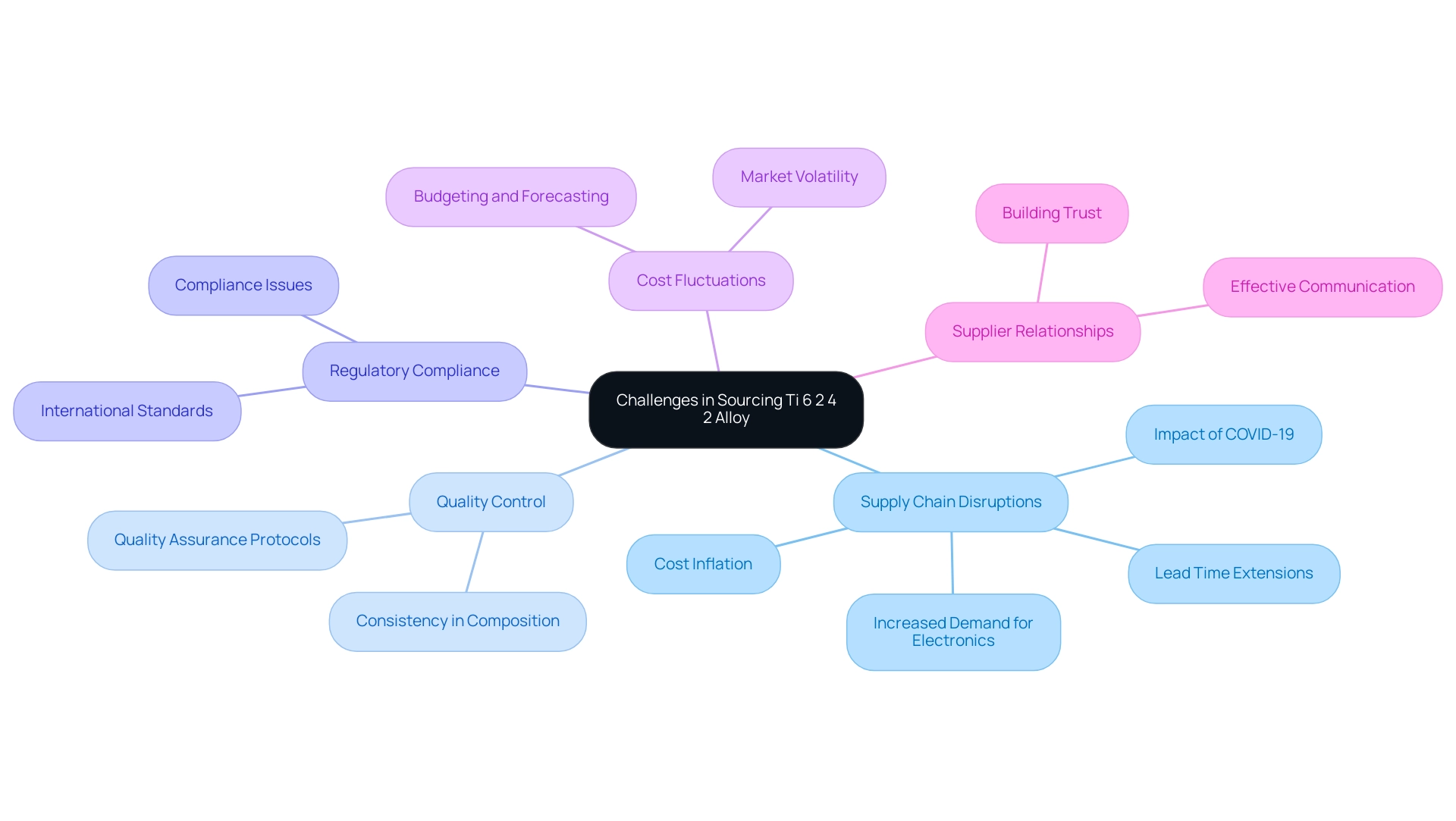
Future Trends in Ti 6 2 4 2 Alloy Applications
As industries keep innovating, the uses of Ti material are set for significant growth. Notable future trends include:
Increased Use in Aerospace: The aerospace sector is increasingly focused on lightweight and fuel-efficient aircraft designs, driving up the demand for Ti 6-2-4-2 material, which offers optimal strength-to-weight ratios critical for enhancing performance. Significantly, from 2007 to 2010, industrial demand for the metal was anticipated to surpass the global GDP growth rate, highlighting its importance in this sector.
Advancements in Additive Manufacturing: The material’s compatibility with additive manufacturing technologies, particularly 3D printing, facilitates the creation of intricate geometries and customized components that were previously difficult to achieve. This capability not only accelerates production times but also reduces material waste, making it a strategic choice for manufacturers. Furthermore, the sintering temperature plays a crucial role in influencing the microstructure and mechanical properties of spark plasma sintered titanium, which is essential for enhancing the performance of Ti in additive manufacturing applications.
Sustainability Initiatives: With a growing emphasis on eco-friendly practices, the recyclability of titanium material positions it as a favorable option for sustainable manufacturing processes, aligning with industry goals to minimize environmental impact.
Growth in Medical Applications: The increasing development of advanced medical devices and implants will likely result in heightened utilization of Ti alloy, attributed to its excellent biocompatibility and mechanical properties, essential for ensuring the longevity and effectiveness of medical solutions. For example, recent research on the synthesis and processing of improved graphite-molybdenum-titanium composites showcase enhanced properties, suggesting their potential for advanced material applications pertinent to Ti.
By monitoring these emerging trends, procurement managers can strategically position themselves to harness the benefits of ti 6 2 4 2 in upcoming projects, ensuring they remain competitive in a rapidly evolving market.
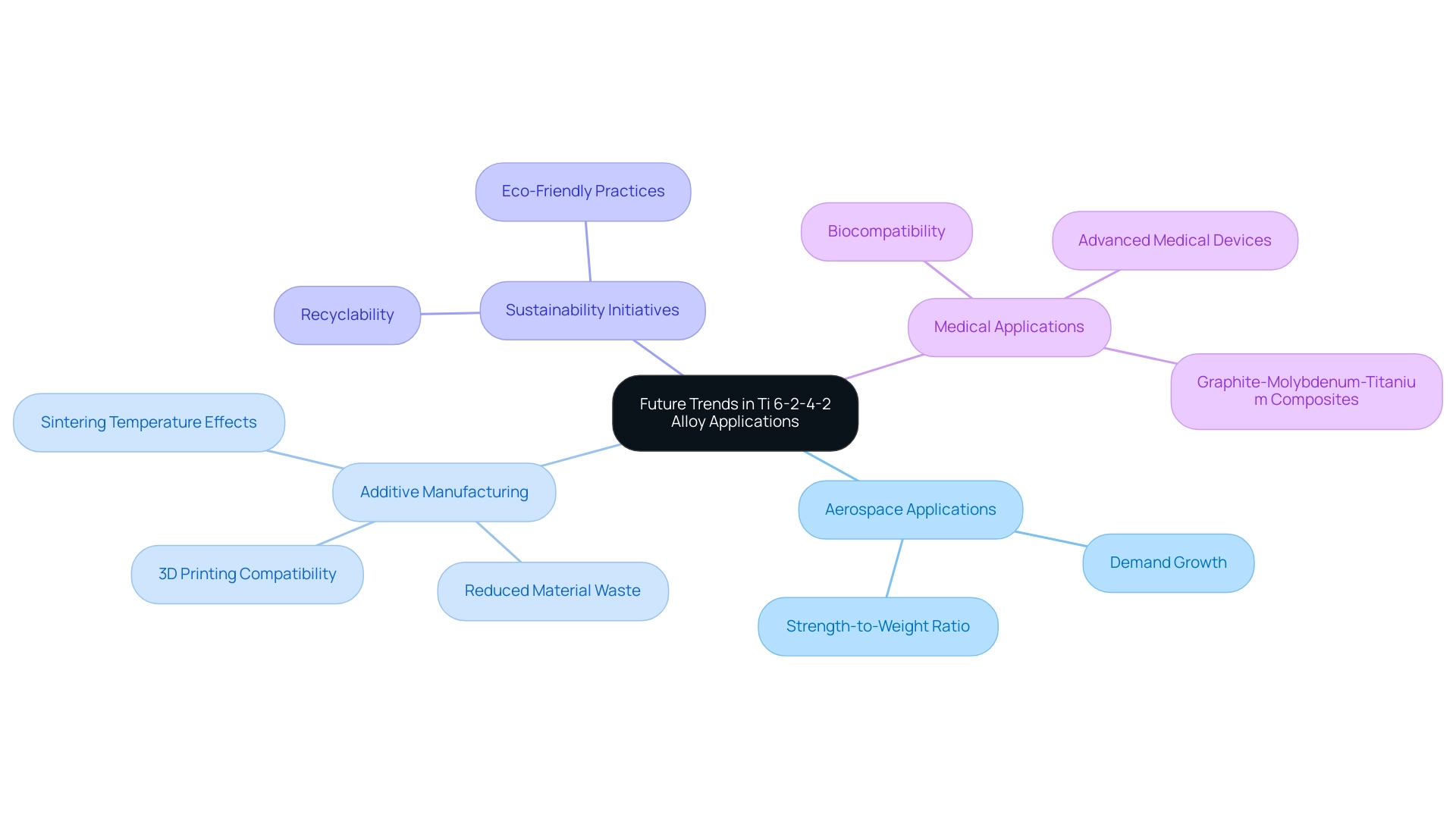
Conclusion
The exploration of Titanium 6-2-4-2 alloy reveals its pivotal role across multiple industries, driven by its remarkable composition and properties. This advanced material boasts an impressive strength-to-weight ratio, exceptional corrosion resistance, and superior performance at elevated temperatures, making it a prime choice for:
- Aerospace
- Automotive
- Medical devices
- Beyond
Furthermore, the alloy’s versatility is underscored by its ability to meet the rigorous demands of various applications, from aircraft components to surgical implants and marine engineering.
Understanding the comparative advantages of Ti-6242, particularly its enhanced strength and weldability, equips procurement managers with the knowledge needed to make informed decisions. The manufacturing processes—ranging from casting and forging to machining and surface treatment—are critical for ensuring that the alloy performs reliably in its intended applications. However, sourcing challenges such as supply chain disruptions, quality control, and regulatory compliance necessitate a proactive approach to procurement strategies.
Looking ahead, the future trends in Ti-6242 applications signal a growing demand driven by advancements in aerospace technology, additive manufacturing, and sustainability initiatives. As industries evolve, the potential for Ti-6242 to contribute to innovative solutions will only increase. By staying attuned to these developments, procurement managers can strategically leverage the benefits of Titanium 6-2-4-2 alloy, ensuring that their projects are equipped with the best materials to meet future challenges and opportunities.




